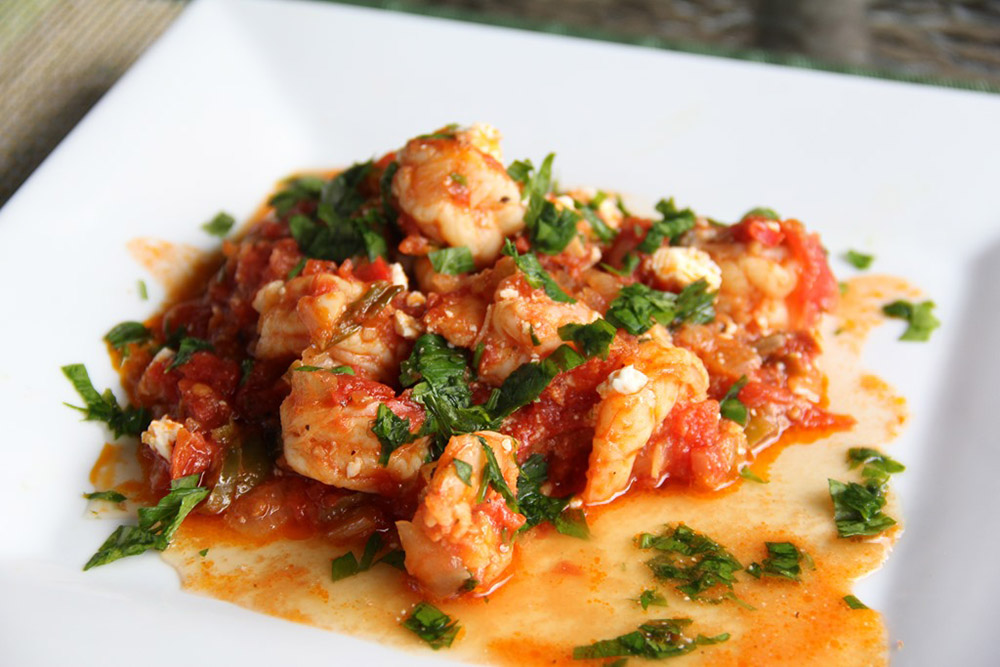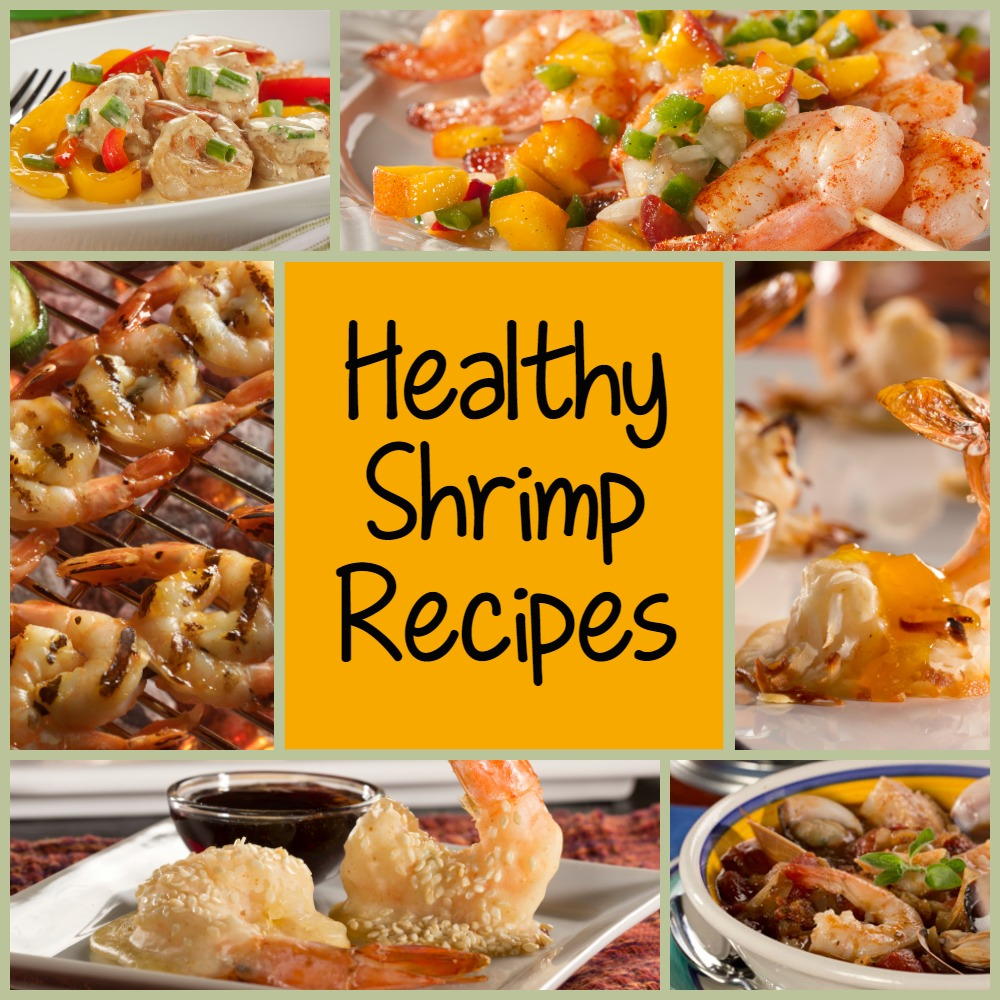Embark on a culinary journey as we delve into the world of healthy shrimp recipes, where taste and nutrition harmoniously coexist. Shrimp, a versatile seafood delicacy, offers an array of health benefits, including a rich source of lean protein, omega-3 fatty acids, and essential vitamins and minerals.
Join us as we explore innovative and delectable ways to incorporate shrimp into your meals, promoting both pleasure and well-being.
From the sizzling heat of the grill to the gentle steam of a steamer, we’ll uncover the secrets of cooking shrimp to perfection, ensuring maximum flavor and nutritional retention. Whether you’re a seasoned chef or a novice in the kitchen, our diverse collection of recipes caters to every skill level and dietary preference, ensuring that everyone can enjoy the goodness of shrimp.
Healthy Shrimp Recipes

Shrimp, with their delicate texture and mild flavor, are a versatile and nutritious addition to a healthy diet. Rich in lean protein, omega-3 fatty acids, and various vitamins and minerals, shrimp offer a range of health benefits.Consuming shrimp as part of a balanced diet may contribute to better heart health, reduced inflammation, improved brain function, and support for a healthy immune system.
Selecting Fresh and Sustainable Shrimp
Choosing fresh and sustainable shrimp is crucial for ensuring both quality and ethical consumption. Here are some tips to guide your selection:
- Visual Inspection: Look for shrimp with a firm, translucent texture, avoiding those with a slimy or discolored appearance.
- Smell Test: Fresh shrimp should have a mild, briny aroma. Avoid those with a strong, fishy smell, as this may indicate spoilage.
- Origin and Sustainability: Opt for shrimp sourced from sustainable fisheries or aquaculture practices that prioritize the health of marine ecosystems and minimize environmental impact.
Cooking Methods for Healthy Shrimp Recipes
Various cooking methods can be employed to prepare healthy shrimp recipes, each with its own advantages and drawbacks:
- Boiling: Boiling is a simple and quick method that preserves the shrimp’s natural flavor and nutrients. However, overcooking can result in a tough texture.
- Steaming: Steaming is another gentle cooking method that retains nutrients and moisture, resulting in tender and flavorful shrimp.
- Baking: Baking shrimp in the oven is a versatile method that allows for the addition of various seasonings and flavors. However, it requires careful monitoring to prevent overcooking.
- Grilling or Broiling: Grilling or broiling shrimp imparts a smoky flavor and a slightly charred texture. This method is suitable for larger shrimp and requires careful attention to avoid burning.
- Sautéing or Stir-Frying: Sautéing or stir-frying shrimp in a small amount of oil is a quick and easy way to cook them. This method allows for the incorporation of various sauces and vegetables.
Meal Planning
Integrating healthy shrimp recipes into a balanced meal plan requires careful consideration of nutritional needs, portion control, and mindful eating. By incorporating shrimp into well-rounded meals, you can reap its nutritional benefits while maintaining a healthy diet.
Planning meals with shrimp as the centerpiece allows for diverse and flavorful dishes. From shrimp salads and stir-fries to grilled shrimp skewers and pasta dishes, the options are endless. However, maintaining balance is key to ensure a complete and nutritious meal.
Portion Control
Portion control is crucial when consuming shrimp. While shrimp is a lean protein source, excessive consumption can lead to increased calorie intake. Aim for 3-4 ounces of cooked shrimp per serving, which provides a substantial amount of protein without overloading on calories.
Mindful eating practices also contribute to healthy shrimp consumption. Pay attention to hunger and fullness cues, and avoid eating shrimp out of boredom or emotional triggers. Savor each bite, appreciating the taste and texture of the shrimp, which can help prevent overeating.
Meal Prep Tips
Meal prepping healthy shrimp dishes can save time and promote convenience during busy weekdays. Consider these tips for efficient meal preparation:
- Pre-cook Shrimp: Cook a large batch of shrimp in advance and store it in the refrigerator or freezer for quick and easy use in various recipes.
- Make Shrimp Skewers: Prepare shrimp skewers with vegetables and marinate them overnight. Grill or bake them for a quick and flavorful meal.
- Create Shrimp Salads: Combine cooked shrimp with mixed greens, cherry tomatoes, cucumber, and a light vinaigrette dressing for a refreshing and nutritious salad.
- Prepare Shrimp Stir-Fries: Stir-fry shrimp with your favorite vegetables in a flavorful sauce for a quick and healthy weeknight dinner.
- Make Shrimp Pasta Dishes: Combine cooked shrimp with whole-wheat pasta, sautéed vegetables, and a light sauce for a balanced and satisfying meal.
By incorporating these meal planning strategies, you can enjoy healthy shrimp recipes as part of a balanced and nutritious diet.
Cooking Techniques
Shrimp, a versatile and delicious seafood, can be prepared in various ways to create healthy and flavorful dishes. Mastering the proper techniques for deveining, cleaning, marinating, and cooking shrimp is essential for achieving the best results.
Deveining and Cleaning Shrimp
Deveining and cleaning shrimp is a crucial step in preparing them for cooking. It involves removing the digestive tract, known as the vein, which can impart a gritty texture and unpleasant flavor to the shrimp.
- Rinse the shrimp under cold water to remove any dirt or debris.
- Hold the shrimp firmly with one hand and use a sharp knife to make a shallow incision along the back of the shrimp, from the head to the tail.
- Use the tip of the knife to gently lift out the vein. If the vein breaks, use a toothpick to remove the remaining pieces.
- Rinse the shrimp again under cold water to remove any remaining vein or debris.
Marinating Shrimp
Marinating shrimp before cooking adds flavor and helps tenderize the meat. Marinating times can vary depending on the recipe, but generally, 30 minutes to an hour is sufficient.
- Combine your desired marinade ingredients in a bowl or resealable bag.
- Add the shrimp to the marinade, ensuring they are fully coated.
- Refrigerate the shrimp in the marinade for the desired time, stirring occasionally.
- When ready to cook, drain the shrimp from the marinade and pat them dry.
Essential Cooking Tools
Having the right tools can make preparing shrimp easier and more efficient. Here are some essential cooking tools for healthy shrimp recipes:
- Sharp knife: For deveining and cleaning shrimp.
- Cutting board: For deveining and cleaning shrimp, as well as chopping other ingredients.
- Mixing bowls: For marinating and mixing ingredients.
- Measuring cups and spoons: For accurate measurements of ingredients.
- Skillet or sauté pan: For sautéing or pan-frying shrimp.
- Baking sheet: For roasting or baking shrimp.
- Skewers: For grilling or roasting shrimp.
- Colander: For draining shrimp after cooking.
Health Considerations
Shrimp consumption is a widely enjoyed culinary experience, yet it’s essential to be aware of potential allergens and food safety concerns associated with its consumption. Individuals with shellfish allergies should exercise caution, as shrimp falls under this category. Additionally, the risk of foodborne illnesses can be minimized by ensuring thorough cooking and proper handling of shrimp to prevent bacterial contamination.
Shrimp in a Heart-Healthy Diet
The inclusion of shrimp in a heart-healthy diet can be beneficial due to its nutritional composition. Shrimp is a good source of omega-3 fatty acids, which have been linked to improved cardiovascular health by reducing inflammation and lowering blood pressure.
Furthermore, shrimp is low in saturated fat and cholesterol, making it a suitable choice for individuals seeking to maintain healthy cholesterol levels.
Environmental Impact of Shrimp Farming
Shrimp farming practices have come under scrutiny for their environmental impact. Concerns have been raised regarding the destruction of mangrove forests to create shrimp ponds, leading to habitat loss for various marine species. Additionally, the use of antibiotics and chemicals in shrimp farming can contribute to water pollution and the development of antibiotic resistance in bacteria.
Sustainable seafood practices, such as responsible shrimp farming techniques and the promotion of wild-caught shrimp, can help mitigate these environmental concerns.
Summary

As we conclude our exploration of healthy shrimp recipes, we leave you with a newfound appreciation for this versatile seafood. With its nutritional prowess and culinary versatility, shrimp has earned its place as a staple in a balanced diet. Remember, the key to enjoying shrimp healthily lies in mindful preparation, cooking methods, and portion control.
Experiment with different recipes, savor the flavors, and reap the benefits of incorporating shrimp into your culinary repertoire. Happy cooking and happy eating!
Questions and Answers
Q: What are some essential cooking tools for preparing healthy shrimp recipes?
A: A sharp knife for deveining and cleaning shrimp, a colander for rinsing and draining, a mixing bowl for marinating, a skillet or sauté pan for sautéing, a steamer basket for steaming, and a grill pan or outdoor grill for grilling are some essential tools.
Q: How can I ensure that the shrimp I purchase are fresh and sustainable?
A: Look for shrimp with a firm texture, a translucent appearance, and a mild, briny smell. Choose shrimp that are certified by reputable organizations like the Marine Stewardship Council (MSC) or the Aquaculture Stewardship Council (ASC), indicating sustainable fishing practices.
Q: Are there any potential allergens or food safety concerns associated with shrimp consumption?
A: Shrimp is a common food allergen, so individuals with shellfish allergies should avoid consuming it. Additionally, raw or undercooked shrimp can carry bacteria, so it’s crucial to cook shrimp thoroughly to an internal temperature of 145°F (63°C) to ensure food safety.
